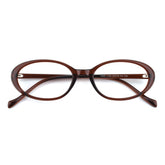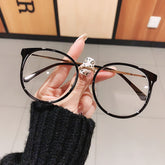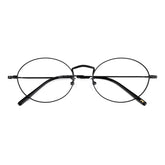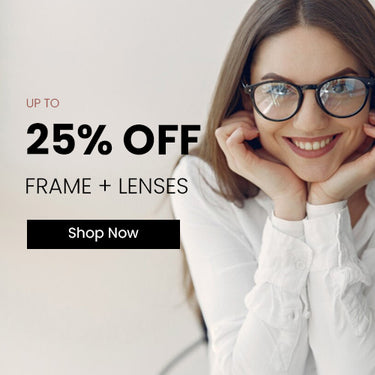Glasses Selection Guide From Sllac
Are you still struggling with the purchase of glasses? This super practical glasses selection guide is for you.
Step1 Optometry
Children and adolescents or people who wear glasses for the first time are advised to refraction after dilated pupils in the hospital so that the ciliary muscles are paralyzed, relax and adjust, and get the accurate actual diopter. Secondly, the prescription of adult glasses, according to the nature of the individual’s work and the range of close-up work, it is recommended to use 0.8 for both eyes and 1.0 for single eyes; Special Note: In addition to standard optometry, adults who refit glasses must refer to the prescription of the original optician and the evaluation of the original lens by the optician in order to avoid inappropriateness.
Step2 Choose the right frame
Before choosing, it is best to understand the basics knowledge of glasses frames and the applicable population.
Spectacle frame type:
- Full frame glasses
The thickness of the edge can occlusion the thick edge of the lens, so it is suitable for high myopia people, and a frame with a smaller frame also can be chosen.
- Half frame glasses
Rimless eyeglasses are lighter due to the lack of a lower frame. The lower frame fixed by drawing wire with medium and high astigmatism should not choose the rimless eyeglasses.
The stability of rimless glasses is relatively poor, and the lens is easy to loosen or rotate, thus the frame needs to be adjusted regularly.
- Size and shape of spectacle frame:
The frame of the eyeglasses should be matched according to multifaceted factors.
- Matching the size of the spectacle frame and pupillary distance can make the edge thickness of the lens fitted thinner and more comfortable to wear.
- The size of the spectacle frame should be in proportion to the size of the face. The upper edge of the spectacle frame should not be higher than the eyebrow, nor should the eyebrow be seen in the lens.
- The shape of spectacle frame should match with face shape and skin color to meet aesthetic requirements.
- According to different face types, choose the style suitable for your own face type. And you can wear it more beautiful, and the mirror leg can not tightly clamp the cheek.
In Sllac, You can choose from more than 150 kinds of quality glasses and sunglasses according to face shape and pupillary distance, and try to match it well.
How do face and glasses match?
The frame should not be the same as the face shape, nor can it be extremely reversed. If you are not satisfied with your face shape, hoping to use the specs frame to change the visual effect of your face. “Circle and circle” and “square with the square” formed by the visual effects will be too strong. Selected extreme opposite faces of the frames are also not feasible. So those people far from a look of abrupt in frames of the facial impression. For example, round faces should avoid round frames and square faces; avoid square frames; on the contrary, a round face is not suitable for a square framed picture. A square face is not suitable for a round frame. All in all, the shape of the frame should balance the face.
Step3 Choose suitable lenses
First of all, you should choose the refractive index according to your own degree
What do you mean by refractive index? In short, the larger the refractive index value, the thinner the center thickness of the lens, and the higher the price.
Then, choose from lens function
For people who face computers and mobile phones for a long time every day
I recommend you to choose the more popular anti-blue ray lens on the market. The anti-blue light lenses generally have background color, and there will be color difference when looking at the display screen.
The sunlight in summer is dazzling, and the snow in winter also reflects light. The photochromic lenses can solve this problem perfectly.
For the group who need to drive at night, the lens that can reduce the light intensity is the best choice.
Progressive lenses are more suitable for young people to read and write, middle-aged and elderly people with presbyopia and myopia.











